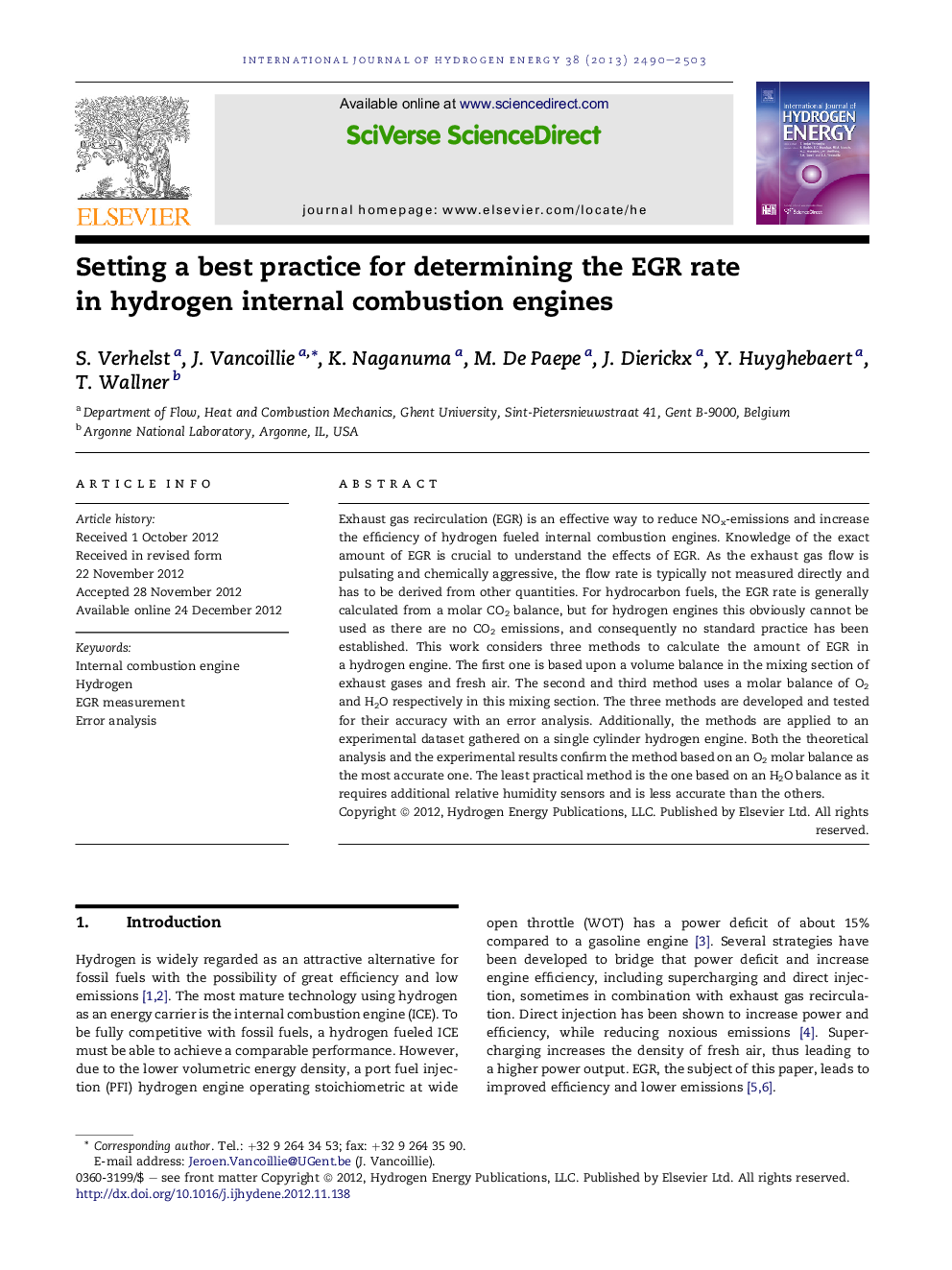| Article ID | Journal | Published Year | Pages | File Type |
|---|---|---|---|---|
| 1274115 | International Journal of Hydrogen Energy | 2013 | 14 Pages |
Exhaust gas recirculation (EGR) is an effective way to reduce NOx-emissions and increase the efficiency of hydrogen fueled internal combustion engines. Knowledge of the exact amount of EGR is crucial to understand the effects of EGR. As the exhaust gas flow is pulsating and chemically aggressive, the flow rate is typically not measured directly and has to be derived from other quantities. For hydrocarbon fuels, the EGR rate is generally calculated from a molar CO2 balance, but for hydrogen engines this obviously cannot be used as there are no CO2 emissions, and consequently no standard practice has been established. This work considers three methods to calculate the amount of EGR in a hydrogen engine. The first one is based upon a volume balance in the mixing section of exhaust gases and fresh air. The second and third method uses a molar balance of O2 and H2O respectively in this mixing section. The three methods are developed and tested for their accuracy with an error analysis. Additionally, the methods are applied to an experimental dataset gathered on a single cylinder hydrogen engine. Both the theoretical analysis and the experimental results confirm the method based on an O2 molar balance as the most accurate one. The least practical method is the one based on an H2O balance as it requires additional relative humidity sensors and is less accurate than the others.
► For H2 engines the EGR rate cannot be calculated based on a CO2 molar balance. ► Methods are proposed to calculate the EGR rate from a volume, O2 and H2O balance. ► These three methods are developed and subjected to an error analysis. ► They are applied to a dataset gathered on a single cylinder H2 engine. ► The method of choice is based on a molar balance of O2 in the mixing section.
